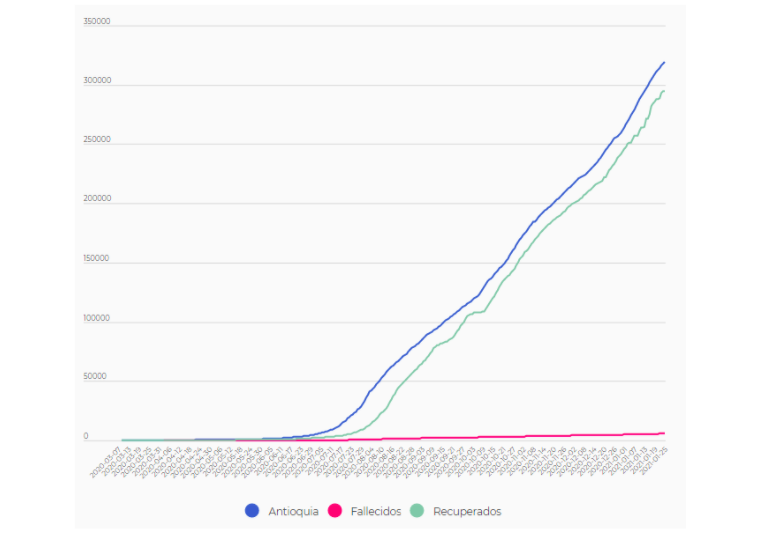Colombia in Uncertainty
Colombia entered its second peak in the COVID-19 pandemic in mid-January 2021. This rapid rise in the number of infections is related to the relaxation, by citizens, of social isolation measures in the traditional times of Christmas, New Years and Three Kings’ Day.
By January 25, the number of infections in the country had already reached 2,027,746 cases, of these 51,747 have died (see figure 1). (1) To this list of deaths, two important personalities of Colombian society have been added in recent days, the defence minister, who died on January 26 in a bed at the Bogotá Military Hospital, and the president of the General Confederation del Trabajo (CGT), the most important trade union group in the country.
Figure 1
Number of people killed in Colombia by Covid-19

Source: National Institute of Health. https://www.ins.gov.co/Noticias/Paginas/Coronavirus.aspx
In Antioquia, the department to which the municipality of Turbo belongs, and where our Research Project is focusing on, an accelerated rise in the number of infections was also observed. (see figure 2)
Figure 2.
History of Covid-19 cases (Blue), recovered (Green) and deceased in Antioquia (Red)

Source: National Institute of Health. https://www.ins.gov.co/Noticias/Paginas/Coronavirus.aspx
This second peak in Antioquia has led to a high demand for Intensive Care Units (ICU), which due to lack of resources has not been met. The occupancy level in Antioquia reached 90% on January 17. This percentage has started to decrease, in part thanks to the extreme curfew measures implemented in most of the municipalities of the Department, which forced people to be at home from 10 pm to 5 am. Total closures were also implemented on the weekends of December and early January. In the same way, face-to-face admission to schools and Universities has been suspended. The University of Antioquia, the largest in the region, has not yet authorized the return to face-to-face work and has restricted field trips associated with the social interventions and research projects.
The outlook in the country is not positive at the moment, the economy is in a tailspin, unemployment is around 14.7% and confidence in the country is weakening. In a study on the resilience of governments in the face of the crisis caused by Covid-19, Bloomberg classified Colombia as the third-worst country in the world to pass the pandemic after Mexico and South Africa. (2)
It is known that mass vaccination of the population is the best way out of this crisis. Some countries in the region have already begun to vaccinate their inhabitants, Argentina, Chile, Bolivia, Ecuador, Venezuela and Panama, for example. However, Colombia has not yet started the vaccination process and there is great uncertainty when this will begin. Although the president of the government declared on December 18 that the purchase of 20 million doses of vaccines had already been negotiated with the companies Pfizer / BioNTech (10 million) and AstraZeneca (10 million). Another 20 million would be obtained through the Covax initiative. Vaccination is projected to begin in February. The reality is that Colombia is one of the countries in the region that is furthest behind in the vaccination process.
February will be a key month to understand which route the country will take to get out of this serious crisis and achieve a state of relative normality.
References
1. Hong, J, Chang, R, Varley, K. (2020). The Covid Resilience Ranking Best and Worst Places to Be in Covid: Vaccine Not Slowing Deaths. Bloomberg. https://www.bloomberg.com/graphics/covid-resilience-ranking/
2. Instituto Nacional de Salud. (2021). COVID-19 en Colombia. INS. https://www.ins.gov.co/Noticias/Paginas/Coronavirus.aspx